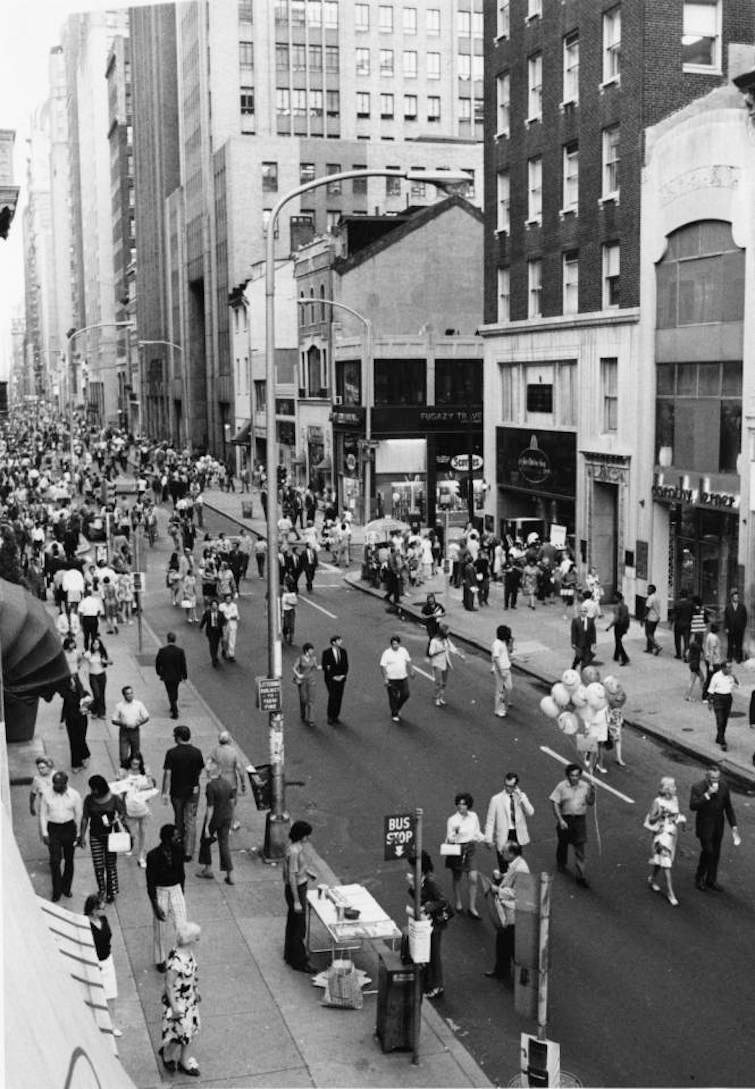March 16: Philly retail venture capitalism | Archaeological oversight | Between Jacobs and Moses

Archeologists have many skeletons in their closet—as many as they could excavate from the 300-year old First Baptist Church Burial Ground that developer PMC Properties discovered in their construction site in Old City. While volunteer archeologists and researchers were able to salvage 77 intact coffins, along with numerous other human remains and artifacts, they criticize the City’s lack of oversight that forced salvage operation. Hidden City evaluates the wins for the scientific community and proposed municipal protocols for proper archaeological investigations in the future.
Residents and businesses have been flocking to Philadelphia and developers are meeting the demand with large-scale new construction throughout the city’s increasingly dense urban core. But as real estate values and rents rise, where do the small local businesses that built Philadelphia’s walkable corridors fit? Considering traditional methods of financing new construction, developers rely on commercial tenants that they know can afford large-scale rents. Diana Lind, contributing to the Philadelphia Citizen, proposes leveraging socially minded venture capitalists (the Josh Koppelmans), to nurture independent business to grow into these large spaces and “catapult Philadelphia into a new category of desirability and equity.”
New Jersey’s solar renewable energy industry allows the state to produce a self-sustaining energy source, helps mitigate extreme environmental conditions, and creates vital energy jobs. However, the industry in the Garden State relies on renewable energy credits and an incentive system that state legislatures set on a year-by-year basis. NewsWorks explains why New Jersey’s solar expansion may become victim to a boom and bust cycle.
If planners had fantasy post war urbananism league, the final round would be Team Jacobs vs. Team Moses. The ringer, Harvard’s Lizabeth Cohen would argue, would be Team Logue. Ed Logue, in his decades of work, executed the changing strategies of urban renewal in Boston, New Haven, and New York state. Like Robert Moses, Logue’s work spanned the careers of multiple mayors, leveraged federal funding, and often razed downtowns and neighborhoods to build from qscratch. However, like Jane Jacobs, Logue grew to believe in rehabbing buildings and dealing with urban inequalities by socioeconomically integrating neighborhoods. Citylab interviews Cohen on Logue’s work as a reflection of America’s “four distinct eras in urban redevelopment strategy.”
Strong Towns Media has its next Strength Test for residents to gauge their cities’ sustainability and resilience: adequate housing options. Providing a step-by-step guide to determine intergenerational housing needs and using maps, stats, and old fashioned dialogue to assess existing conditions, this Strength Test encourages residents to paint a realistic picture of the available housing stock in their neighborhood and envision an appropriate plan moving forward that integrates the unique needs of mixed-income, mixed-use community that serves three generations.
WHYY is your source for fact-based, in-depth journalism and information. As a nonprofit organization, we rely on financial support from readers like you. Please give today.







